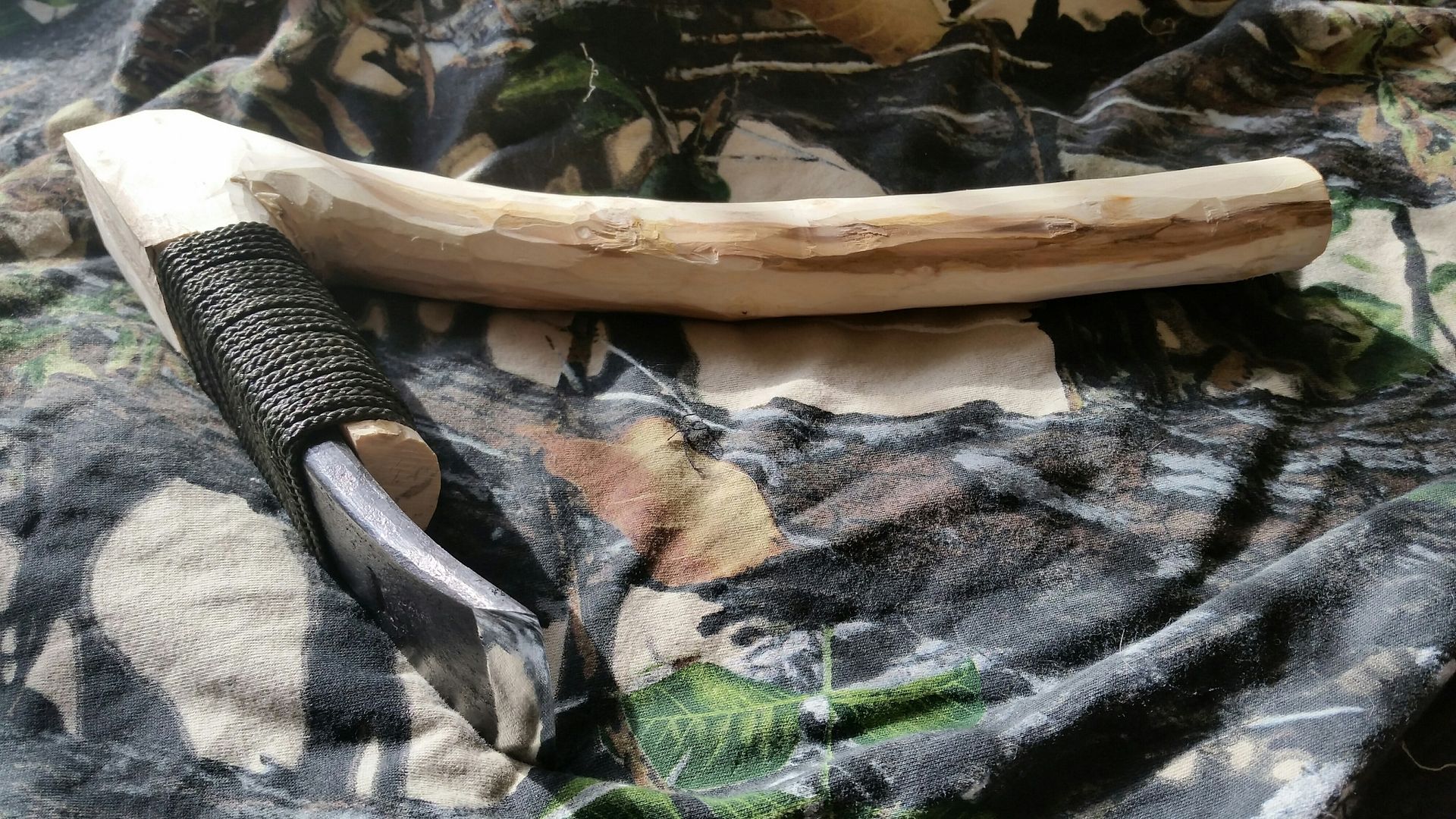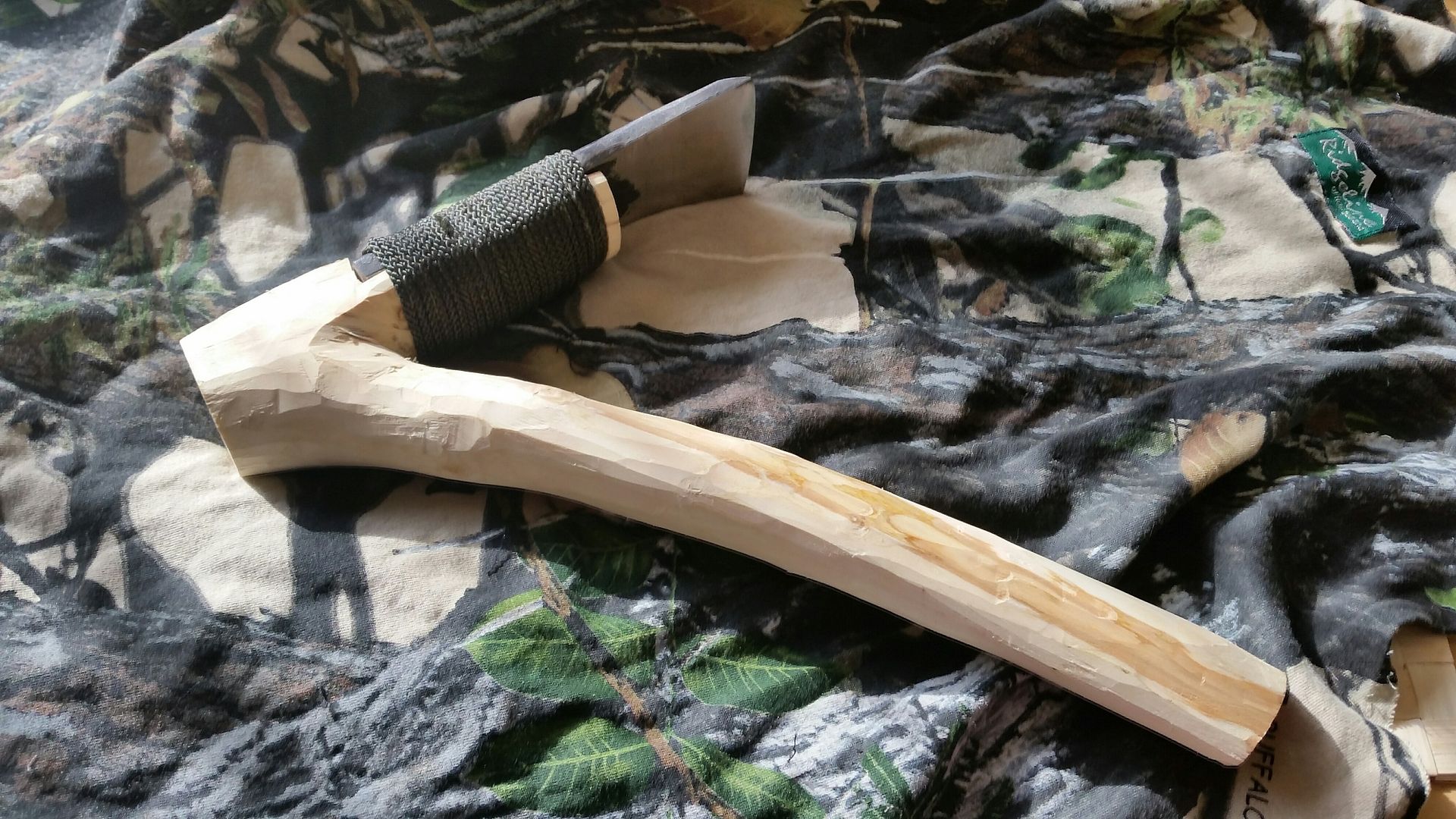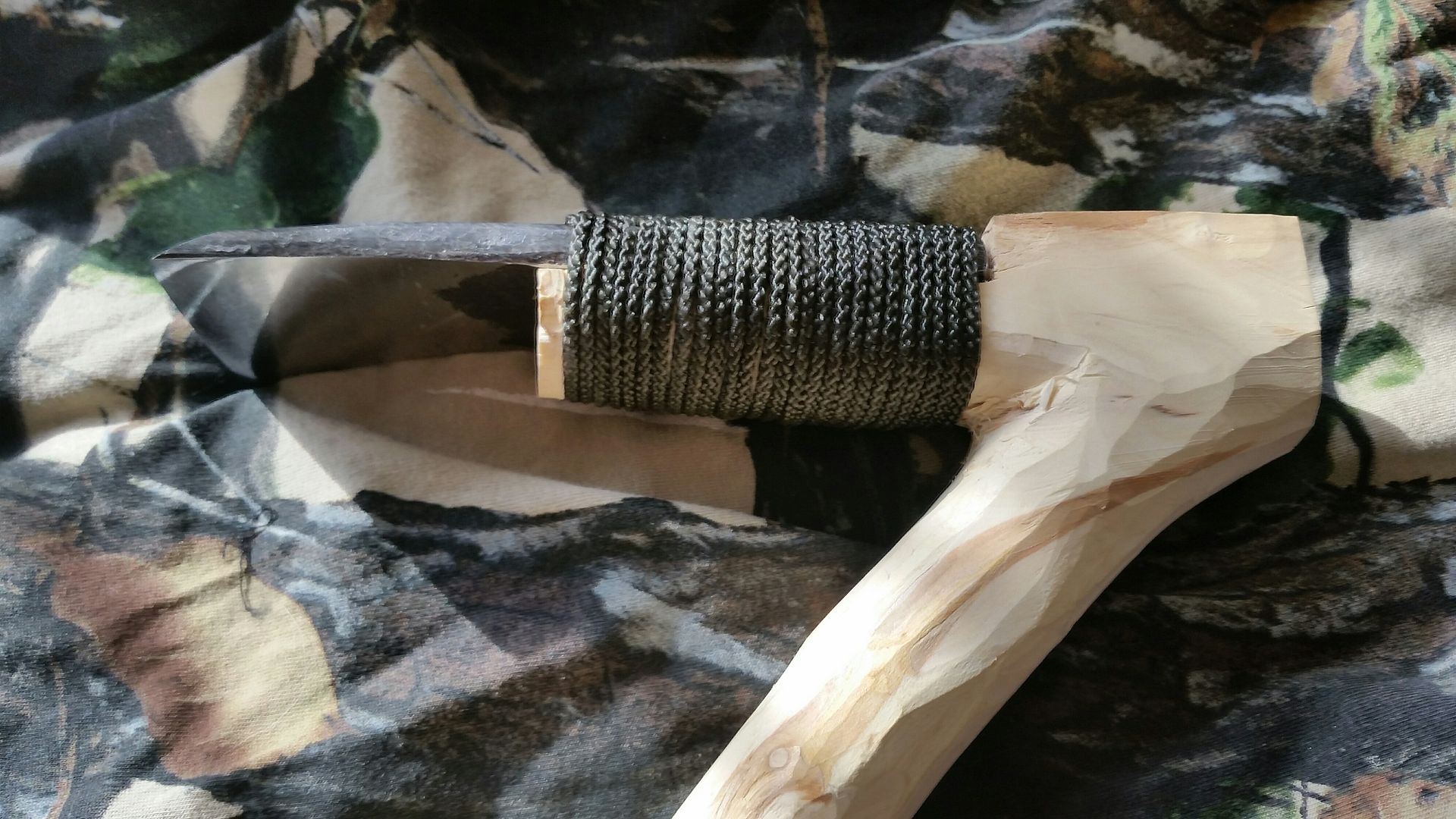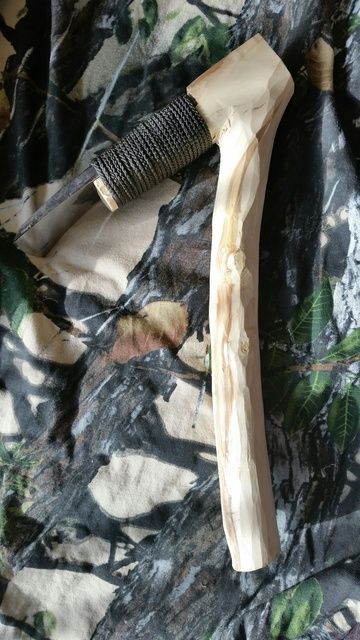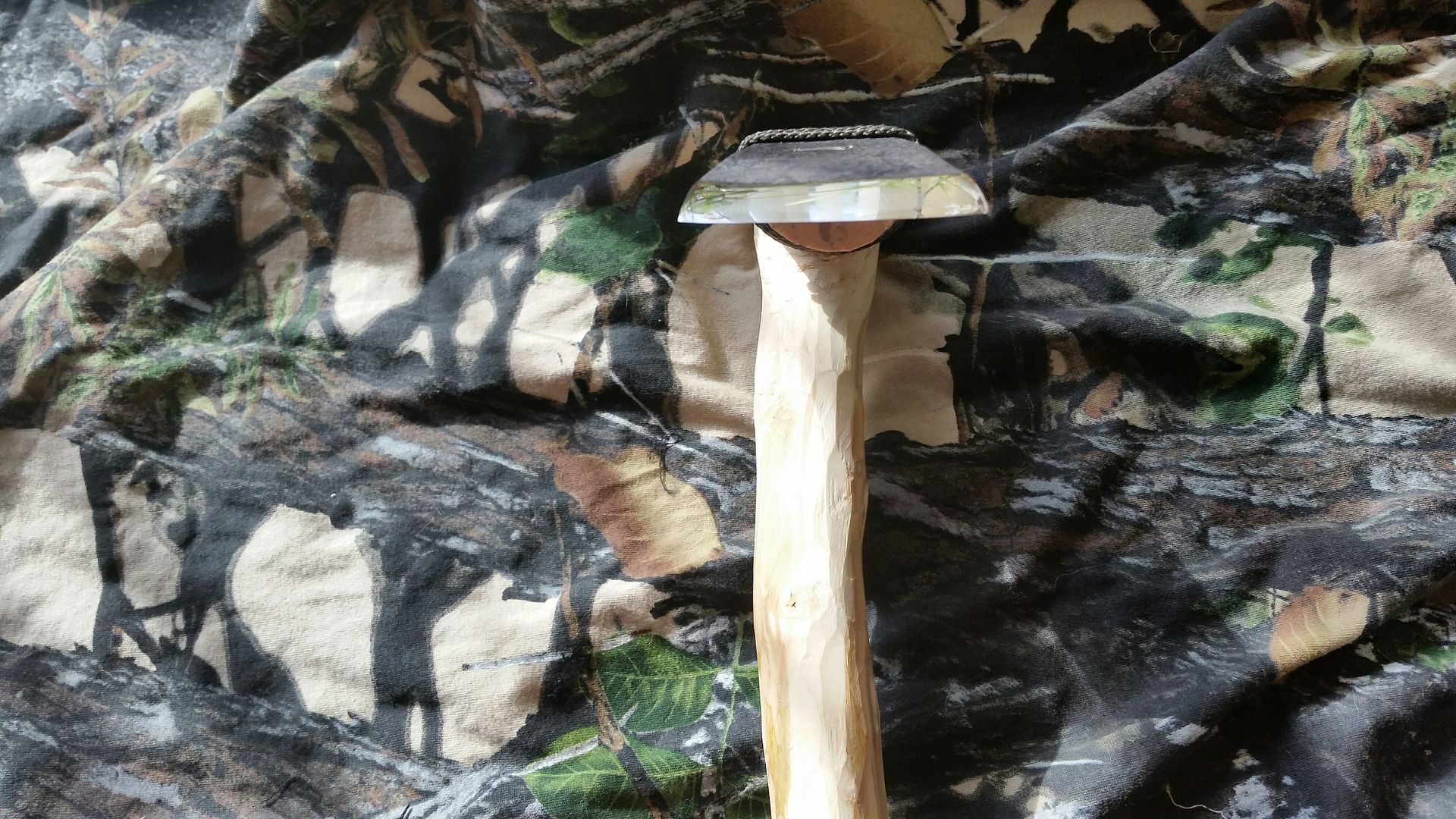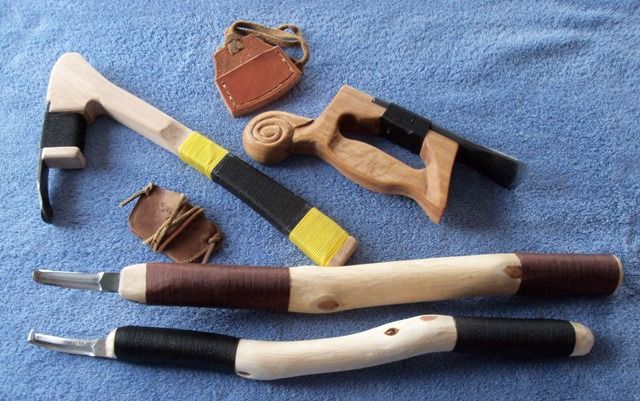Excellent. I see all the pictures. Nicely done.
Appearances can be deceptive. The strike is set by how far in/out the blade edge is, relative to the bevel angle. The usual trick is to attach the blade with a couple of hose clamps. Turn the buckles under so they don't bash your work. Work for a day. Move the blade 3/8" first one way, then the other, work for a day each.
Only then do you cut the blade seat and dry-whip the blade in place.
Hand position: draw an imaginary line at 90* from the edge of the blade to intersect the handle. That's what's called the "Holm Constant." Named for a prominent PacNW native carver, he measured dozens of elbow adzes to learn 2 things: the most popular elbow angle is 55*. Some carvers liked 45*. The intercept of the line with the handle is the position of your index finger. Mark that somehow.
Obviously, you can choke up on the handle. However, if you have a day's carving to do, getting the striking balance correct takes a lot of the stress out of bashing away all day.
Handle size: I identify this as the "Kestrel Constant." Gregg & Charlie are the bladesmiths at Kestrel Tool. The handle needs to fit your hand. . . not too fat, not too skinny. Hold the handle in a fist-grip, palm up. The tips of your second and third fingers should just touch the fat ball part of your thumb. Then you can relax. A death-grip on a skinny handle will wear you down. For my hands, a blank of 7/8" x 7/8" is best to begin. I can make do with 1" x 1" but 3/4" square is too small.
Strike rate: A PacNW carver taught me this = listen to your heart. Strike at your heart rate. It does seem stupidly slow until you get used to it. Go any faster and you will wear yourself out before you get much done. As strange as it sounds, I had to print a card "Listen to your heart" as I would gradually speed up and get tired.
If the picture attaches OK, here are my Baby Sitka elbow adze (55*) and my D adze. I can shave maybe 1mm with the D adze and my striking accuracy is much better than with the elbow adze. The handle is 6/4 flat-sawn birch and the grip area has been cut down for my hands, as was done on the D-adze handle. The upper change from yellow whipping to black is the Holm Constant. The others tools are my design of "planer knives" for smoothing surfaces enough to lay out a drawing.
Those blades started life as Mora #188 Equus farrier's knives at 30*. I knocked off the handles, cut down the hooked tips and revised the bevels to 12*.


